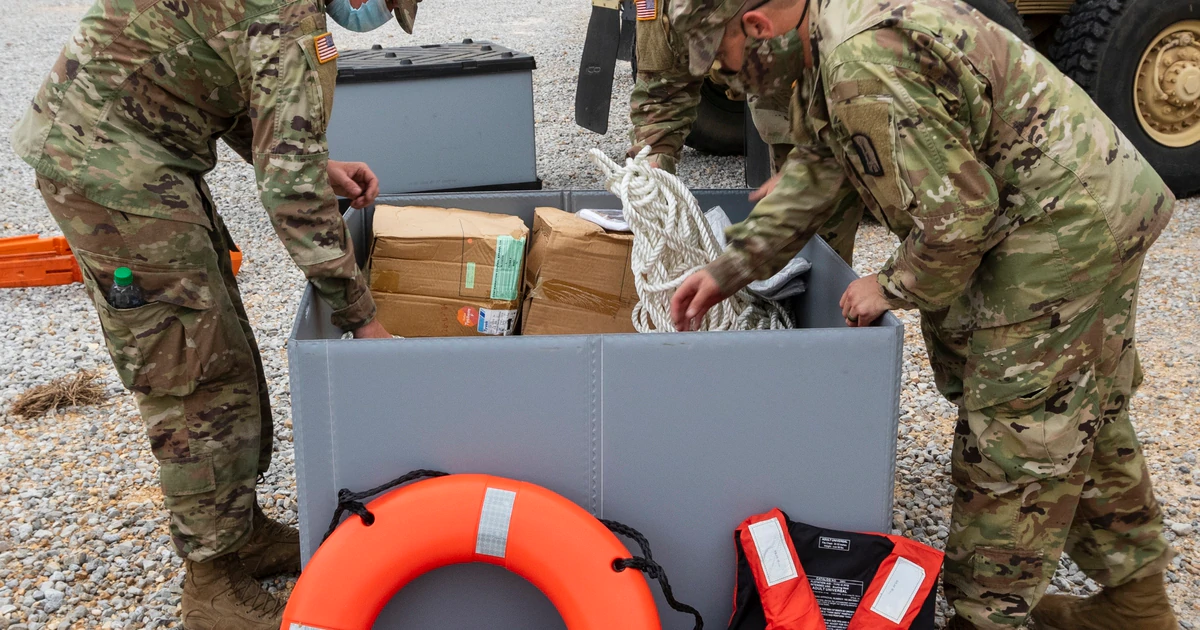
Military installations on the northeastern Gulf Coast braced for heavy winds and torrential rain on Tuesday as Hurricane Sally approached the shoreline.
Parts of the coast from Louisiana to the Florida panhandle could see “historic flooding” of up to 30 inches with “extreme life-threatening flash flooding likely through Wednesday,” according to a Tuesday morning bulletin released by the National Oceanic and Atmospheric Administration.
The Category 1 hurricane, moving northwest at 3 mph, is set to make landfall near the Biloxi coast early Wednesday morning, according to an AccuWeather forecast. Because the hurricane is slow-moving, the real danger is prolonged periods of wind and rain, according to the National Aeronautics and Space Administration.
Sally is currently 65 miles from the mouth of the Mississippi River at the southeastern tip of Louisiana and 105 miles south of Biloxi. Its maximum sustained winds are 86 mph with gusts reaching 98 mph.
The Navy, Air Force, Coast Guard and National Guard began closing on-base commissaries and other services while opening shelters and coordinating with local and state agencies in Louisiana, Mississippi, Alabama and Florida.
National Guard soldiers loaded Humvees and light-medium tactical vehicles on Monday and Tuesday after putting together teams of 10 from both its 223rd and 890th engineer battalions to assist Mississippi residents in Westpoint and Gulfport, respectively, in the likely event of high-water rescues.
“The Mississippi National Guard readiness centers in Pascagoula, Picayune and Gulfport are awaiting mission taskings from the Mississippi Emergency Management Agency in response to Hurricane Sally,” Lt. Col. Deidre Smith told Military Times in an email Tuesday.
Each 10-person search and rescue composite team is equipped with one Humvee, two high water rescue vehicles, life vests, throw rings, ropes, blankets, gloves and chemical lights. The Mississippi National Guard has a total of 60 trained Soldiers on six composite teams ready to respond with high-water rescue and recovery operations in the wake of Hurricane Sally, Smith said.
“Responding to these events typically requires quick reaction, so it is important that personnel and equipment are always prepared and ready to deploy when needed,” said Lt. Col. Thomas Howell, 223rd Engineer Battalion commander, in an email to Military Times on Tuesday. “The ability for our Soldiers to deploy with little or no lead time is a reflection of our Soldiers’ commitment and willingness to support their communities and state.”
Governors in Louisiana, Mississippi, Alabama and Florida have declared states of emergency and President Donald Trump on Monday approved federal emergency declarations for Louisiana, Mississippi and Alabama.
In New Orleans, the Coast Guard Air Station readied an MH-60 Jayhawk helicopter on loan from the base in Clearwater, Florida with supplies for potential search and rescue operations. A second MH-60 was also flown in from out of state.
The station also performed preparatory maintenance on its four MH-65 Dolphin helicopters ahead of the hurricane’s approach.
“We do this 24/7, 365 days a year,” said Lt. Patrick Collins, a pilot at the air station. “We are your subject matter experts for all search and rescue maritime, so we’re ready to respond when the calls come in.”


Be the first to comment